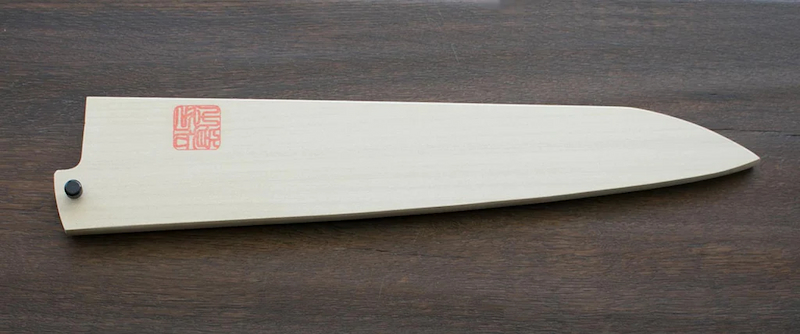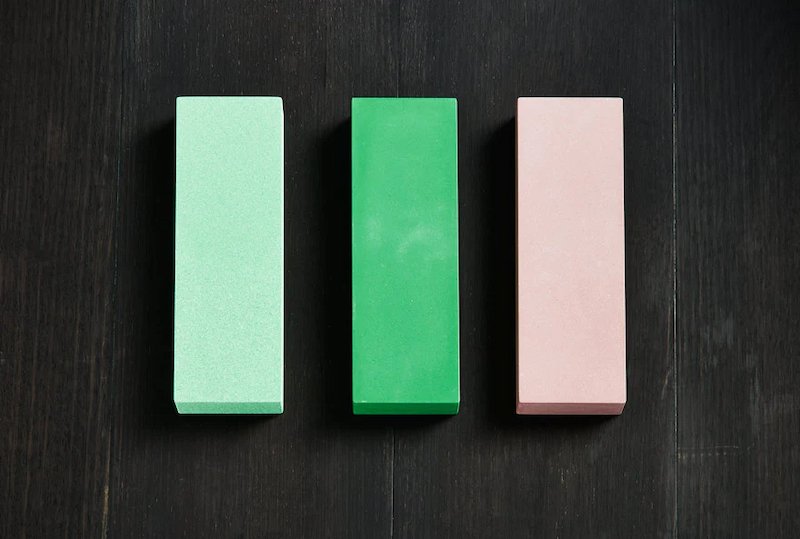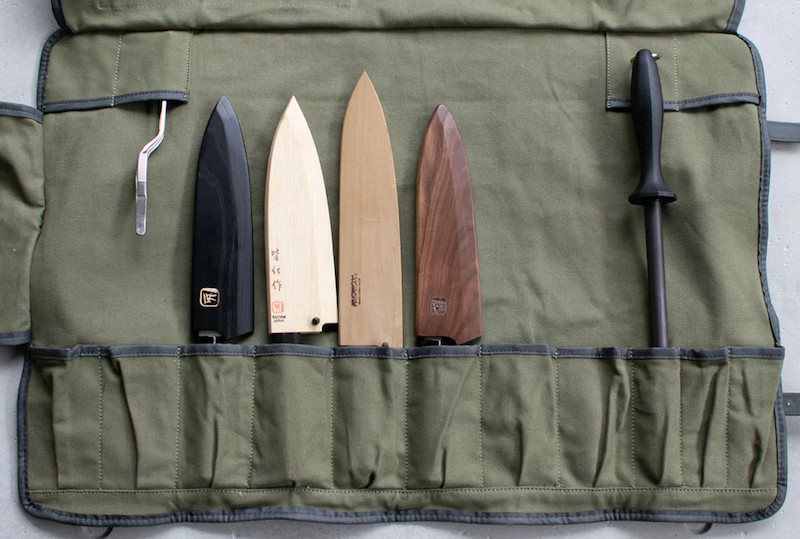Every kitchen needs a good set of knives. But once you have them, you should take good care of them. This way they’ll last for many years. Besides regular cleaning and sharpening, there are several more accessories you can buy to extend their life.
Keep the Blade Covered

This simple yet very practical item is used to protect the knife’s blade. You may also know it as a scabbard or a saya. A high-quality, protective knife sheath makes the knife easier to transport as well. Even though knives are very durable, they can still get chipped, warped or dented. Plus, the sheath will keep the blades away from each other if you’re carrying more knives in the same bag.
Start by picking the material. They all have their pros and cons, and it all comes down to personal preferences. Leather is a very traditional choice. It’s also very popular because of its aesthetics. Leather looks good in any shape and form, especially brown leather. The only disadvantage is that it’s not as durable as you think it would be.
Because it’s a natural material it can degrade after some time. Also, if you expose it to extreme heat, it can dry out and crack. Kydex is a more modern material. Some consider it a replacement for leather. It’s thermoplastic and very durable. This is a breathable material, but it can cause condensation inside. So, make sure you clean and wipe the knives well before putting them inside.
Polymer is another popular material. It’s very popular in the knife community. Besides looking good, these sheaths are very durable. It might seem like a strange material for a sheath, but wood is an option as well. To keep the knife inside, they have magnets in the interior. They look incredible, rustic and very attractive, but they’re also very strong and durable. Some can be minimalist with just the manufacturer’s name engraved, and some can be very detailed in their exterior.
Once you buy it, you should take good care of your sheaths. Always keep an eye on them for flaws and damage. In case you notice something, either get it fixed or buy a new one. The threads and stitching may crack. But you can fix this yourself by slightly melting the tip of the thread with a lighter. This will prevent it from being pulled. Clean them of debris and dust and give them a water-resistant finish if they don’t have one.
Keep the Blades Sharp

Kitchen knives are something you use every day. It’s only natural that they dull over time. That’s why you need a good knife sharpener. There’s a saying that states “A sharp knife is a safe knife” and that’s true because it won’t slip when you try to cut through the food. You can get them professionally sharpened but this will cost you a lot of money.
Buying a sharpener is a smarter investment. There are 4 main types of sharpeners. Manual ones are simple and lightweight. They have a handle that you use to stabilise them to the counter and then you pull the knife through the slots. It works on both sides of the knife at the same time. Once you’re done, you can safely return it to the knife sheath.
Electric sharpeners, on the other hand, are motorised. They have a motor, wheels, and abrasive disks. You can choose between speeds and levels of abrasion in some models. You can also get a whetstone. This is a very traditional method. To sharpen the knife, you hold it horizontally to the stone at a slight angle and skim it back and forth.
“Steels” or sharpening rods look the same but function differently. The purpose of honing rods, which can be made of steel or fine ceramic, is to better align the steel fibres on the knife’s edge. Sharpening rods are made with a rougher surface that takes some of the metal off your blade, giving it a slight sharpness this way.
A Bag for Your Knives

Once you buy knife sheaths that protect the blade, you’ll also need a bag to hold all of the knives together when you travel. You can also use it as a storage option. The number one consideration should be the bag’s capacity. It should hold every knife you have in your house. It’s better if you buy a bag with extra slots in case you add to your collection.
Depending on the size of the knives you have, you’ll determine the size of the bag. All of them have different sizes and shapes, so keep this in mind when you buy the bag. They should all fit comfortably inside. The closure system should be simple and easy to handle. It can be snap buttons, clips, zippers, fasteners or hook-and-loop. Some even have a lock, if you want to be as safe as possible.
The bag’s materials vary as well. Some people prefer a softer, more bendable material like leather, canvas, nylon and polyester. They’re oftentimes easier to handle. However, these materials might get damaged faster. Harder, more robust materials like metal, can oftentimes stand the test of time and last for many years.
Don’t Forget the Knife Block
Knife blocks are a great storage option for your knives. They’re often settled on the kitchen counter and can serve as a nice accessory to complement the kitchen’s interior. There are 3 main types of kitchen blocks, universal, classic and magnetic.
Universal blocks got their name because they can store any knife no matter its material, size and blade thickness. They’re usually made of wood or some plastic and are filled with nylon, interlocking rods. They’re the ones that hold the knives upright.
Classic knife blocks are very elegant. They’re made of wood which gives them a very natural look. They already have predefined slots for every type of knife, you can’t just store them as you want. The magnetic variant of this kitchen item is the newest, more modern version. Instead of a box, they’re just a flat surface that has magnets on the inside. Once you get the knives close enough the magnetism works. However, if you have ceramic knives, this one won’t work.
